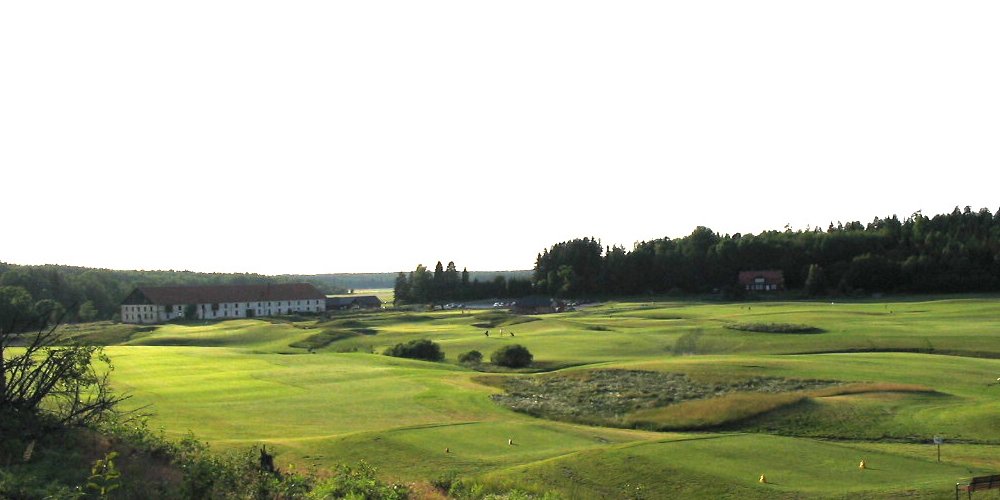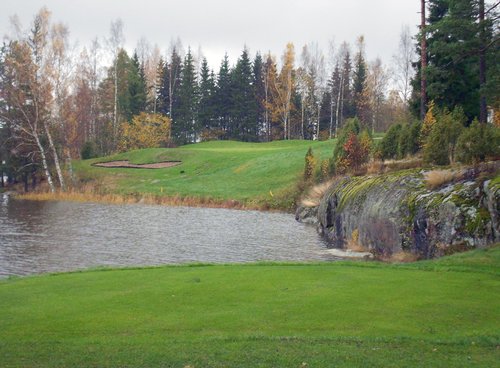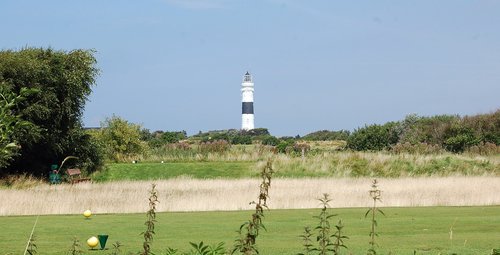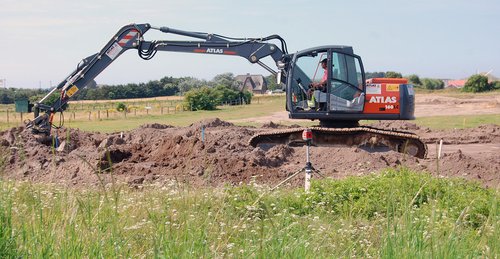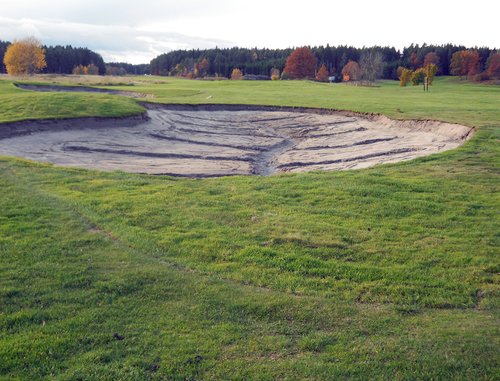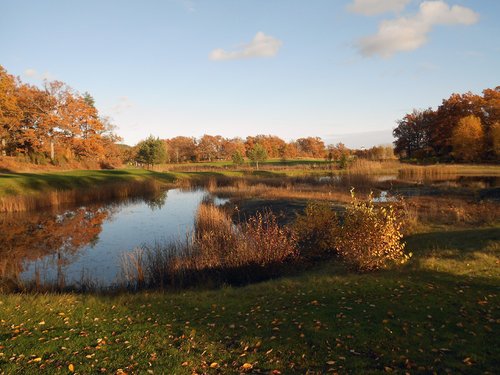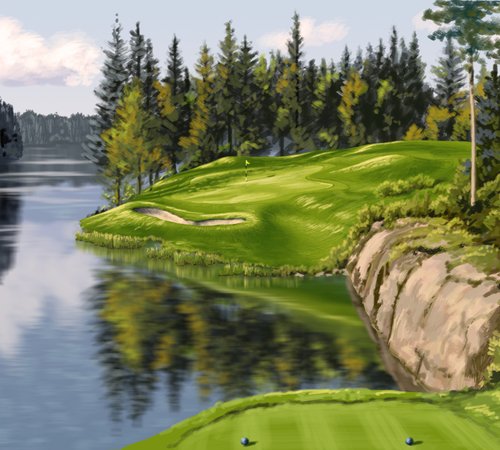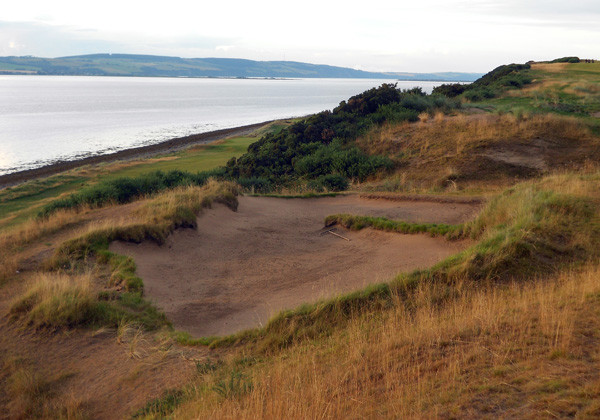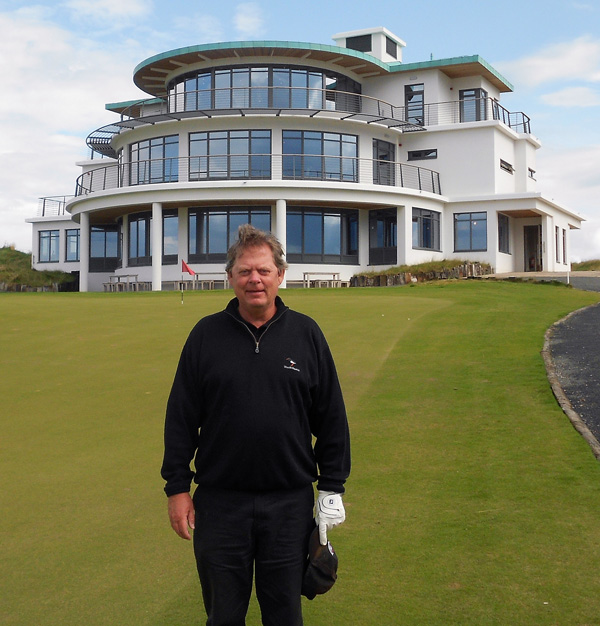Dropdown menues for the English site
Fjällman Golf Design
News
Hulta GK
In September the redevelopment project of greens and green areas on Hulta Golf Club ended with the completion of hole 10 to 18. Last year the first nine holes were rebuilt and play could start already in the beginning of June this year.
Construction-wise, the project has been very successful as well as economically, as all work was within the budget limits. The project has attracted attention through an article on golf.se which you can read here.
There is also a very solid documentation with pictures on the golf club's website: www.hultagk.se
Hole 9 and 18
The new green area on hole 9 in the foreground with the rebuilt 18th green area in the background. Both greens are overlooked by the magnificent mansion which is also the clubhouse.
Kurk GK - Finland
During the autumn we have started reconstruction of Kurks 18 hole course. We started with the holes 10 - 18, which is called Lake. The project is in many aspects similar to Hultas reconstruction projects because we on some greens only change the green material and the drainage layer while other green areas are subject to major changes.
The external environment has initially been so favorable that reconstruction has been carried out with precision and dedication of all participants in the project. As the golf club has 27 holes, members and guests have been able to play 18 holes during the work.
Read more on the golf club's website: www.kurkgolf.fi
NEW short course - ÅLAND GK
31st of August this year, the new 6 hole course on Åland GK opened. The holes are laid out in the extension of the driving range in a slightly undulating landscape. This has made it possible to vary the holes considering the play although the length is limited to about 100 meters.
Hopefully this short course, which has been named Princess, will be an appreciated addition to the clubs existing two 18 hole courses (Castle and King's Course).
The course provides an excellent opportunity to practice and improve your short game and gives beginners a pleasant introduction to the game.
Opening at Åland
Princess opened with a great fanfare on the 31st of August. In the pictured the course is flankedby the entrepreneurs Christer and Kenneth Lindqvist, the golf clubs president Åsa Nordström and Chief of Course Johan Englund. The person with Manchester United jacket is yours truly ...
VÅRGÅRDA GK
As you may know, Swedish Golf Digest has a survey of the Sweden’s top 50 golf courses. Happily, Vårgårda ended up on this list this year. And even more, the course was appointed to Västergötland’s best course.
GOLF CLUB SYLT - Germany
Together with my partner, Rolf Stephan Hansen, we have during the summer completed three new golf holes at the clubs short course. The club now have a 9 hole short course in addition to the 18 hole course.
The game on the courses is extremely intense during the summer months, so the addition of three new golf holes is particularly welcomed.
The construction was carried out during 2 weeks with Kenneth Lindqvist as excavator and me on the spot.
The lighthouse is a well-known feature of Sylt Golf Club.
Kenneth Lindqvist from Åland carried out the construction at the Sylt Golf Club.
Söderköpings GK - Bunker renovation
This fall, we have continued to renovate a number of bunkers at Söderköpings GK. We follow an established plan that aims to provide 18 hole course a common character and improving bunkers drainage capacity. Kenneth Lindqvist did these renovations also.
Top: Green bunkers on hole 3 gets new shape and new drainage. The areas around the bunkers also gets new material.
Beautiful autum view and renovation green bunker hole 3, an evocative autumn image from Söderköpings golf course.
KURK – FINLAND
It is now decided that during 2012 I will be engaged as a golf course architect for the rebuilding of the greens and green areas on Kurk GK outside of Helsinki, Finland. We will begin the renovation in late summer or early autumn. The golf club has three 9 hole loops and rebuilding will be applied to the loops known as Valley and Lake. The third loop is called Hill and it was my privilege to be involved in the design and the build in 2005-2006. In 2012, we will start with Lake and in 2013 it is planned to start with Valley.
A proposal of how hole 5 on Lake will look like after rebuilding.
ÅLANDS GK
Construction of the new six-hole course ran on just fine during fall. All greens and tees were sown and coming spring the other playing areas will be sown. During fall and winter work with a wood palisade will be carried out on the 17:th hole on the Castle course. This will make the hole even more spectacular and many are hoping that this will be the course signature hole.
SÖDERKÖPINGS GK och HULTA GK
In 2012 I will together with Söderköpings GK make a draft for bunker renovations of the entire golf course. It is a continuation of the work with the bunkers we did during autumn 2011. Also during autumn of 2012, the last nine greens and green areas on Hulta GK will be rebuilt.
VÅRGÅRDA GK
It is with great pleasure and pride that I just found out that the golf course in Vårgårda is among Sweden's top 50 in Golf Digest's annual ranking. For all of us who were involved in the construction of the golf course, this statement is a wonderful Christmas present.
Castle Stuart – a look into the future
We are now entering the deep darkness of November. Another golf season has passed. On golf courses around our country, the joy has been shared with madness. Some has made par or better, other bogeys or worse. Water hazards and wooded areas have been increased with golf balls and some people still changes clothes on the parking lot. Debates in the clubhouse have been fiercely on the game's curses and for the umpteenth time the decision that the golf clubs will be sold online. So in other words, it is as it should be. But the big question is; did we have fun?
Playing golf is something we do on our own free will. We swing our clubs during a time of the day that we ourselves decide over, without being obliged to perform other necessary tasks for our survival. A slightly too short backswing should not reduce our ability to bring food onto the table. The goal of chasing around after that little white ball on the well-kept green areas would rather come to our strive to experience the joy, excitement, significance and contribute to an improved health. If we also have tremendous fun while we slither our way along the golf course and not end up behind "the slow players", the experience is even greater.
If we for a moment reflect on that golf is a only game, probably most people will agree that having fun is one of the main components of the game. There are certainly many people who will have objections against regarding golf with this simple starting point and argue vigorously that it is much more than that. Golf is for many a career, a lifestyle or a necessity for social contacts. But regardless of our motives for trying to get the ball below the ground in a cylindrical cup in as few strokes as possible, we can not ignore the fact that the game of golf comes from the idea to pass our free time in a fun and entertaining way.
As with all playgrounds, the golf course also has a form of structure and special characteristics peculiar to the activity. All creative environments have several characteristics that are common regardless of whether it refers to a football field, hockey rink or golf course. Among these characteristics once can mention openness, diversity, originality, community, trust and tolerance. (Sahlin N-E, creativity, philosophy, 2001)
The golf course, however, differs significantly from other playgrounds or stadiums where the exercise requires large areas, which are linked to the concept of grand scale. To build a golf course (the playground) in nature is an art form that requires diverse skills of all involved in a golf course project. The question we should ask ourselves is how we golf course architects in the creation of a golf course, can help to increase the ability to have fun. Let me tell you about a new golf course which, in my opinion, is insanely fun to play.
Castle Stuart Golf Links is located about 9 miles outside Inverness, Scotland's seventh largest city. Along a piece of the Moray Firth coastline, the initiator of the golf course Mark Parsinen, along with the American golf course architect Gil Hanse has layed out an outstanding golf course. The course opened for play in 2009 but already this year they hosted the Scottish Open on The European Tour with Luke Donald as the winner.
Parsinen is to many a familiar name as he previously was behind the creation of Kingsbarns Golf Links on Scotland's east coast. Experience from the construction of this golf course with a strong pronounced philosophy of the new design of the golf course, has contributed that the Castle Stuart Golf Links feels like a golf course for the future. Although the golf course is designed with inspiration from golf course architecture's golden years between 1890 and 1930, when many of today's classic golf courses were built. But many of the characteristics that make these courses so special was developed deeper which gives a new dimension to the game.
There is a clear stated goal that the golfer should have fun during their visit to the facility and the design of the golf course is an important component of this approach.
The fact that it today takes too long to play 18 holes is one of the causes that leads many to consider to stop playing golf. Many have already found new activities to fill their free time with. There are obviously several factors that makes us spend more time on our golf courses, but one that is often mentioned is that one feels that the golf course is too difficult to play. This could depend on the design of the golf course as well as on how it is maintained or presented. Several strokes in deep bunkers is not likely to be appreciated. Furthermore, the search for the ball after a hook or a slice in thick tall grass has surely contributed to postponed or absent family dinners.
New winds are blowing within golf course architecture. The key word is minimalism, which involves using the natural forms that exist in the landscape and integrate them into the golf course. Hills and hollows, which has existed for decades becomes obvious parts of the golf course strategy. The golf course challenges players from tee to decide a strategy which will give the best approach to the green, taking into account the area's topography. A green area can be completely without bunkers, but surrounded with strong undulations, which affect the ball rolling towards the green. The greens contains many dramatic levels, but always offers interesting and varied flag placements. The outer area is a natural part of the golf course when the areas are shaped by the sites adjacent vegetation. It must seem as if the golf course is a natural part of the landscape.
When you are on the first tee on Castle Stuart it feels as if the golf course has always been there. The holes are laid out in the terrain with a gentle hand in a natural way. You are offered generous play areas where you almost exclusively see everything in front of you when you are on tee and look toward the green area. If a stroke, against all odds should miss your intended line of play and end up in the rough, you will find the ball quickly in the sparse grass. You will have every opportunity to play your way out without too much sacrifice. The bunkers are strategically placed, usually clearly visible from tee. The sand surfaces are quite large in the bunkers and the adjacent vegetation is a part of the bunker definition. This differs from the turf edged bunkers we usually see on the traditional links courses.
Over the past 100 years there have only been built a handful of golf courses on land we characterize as a typical links landscape with dunes and ephemeral sand. Bundersand on Sylt in Germany is one example and Machrihanish Dunes in Scotland is another. The latest and perhaps most famous is of course, Donald Trump's project north of Aberdeen. All projects have been preceded by extensive investigations and hard bargaining before authorization license to build the golf course and in some cases there have been strong protests from local residents. So the entrepreneurs and investors who likes to pass the links tradition further has to look for other land areas.
As with Kingsbarns Golf Links, Castle Stuart is in large part built on farmland. This is not the natural land formations that we associate with links golf. The area along the shoreline had faintly undulating lines, while the upper plateau lacked in large extent, interesting country structures. So extensive terrain modeling was necessary to create the golf course they were to build. Luckily they found a reasonably amount of sand in the area which favoured the formation of the golf course.
A round of golf at Castle Stuart feels like turning back the clock but into the future. It is an easy walk with stunning surroundings and scenery. The golf course offers great challenges regardless of skill, and last but not least, you have fun. If the genie in the bottle would suddenly show up with an offer of three wishes, one of the whishes will be to play Castle Stuart every day. The second one that Halmstad BK will return to Allsvenskan very soon. The third one, I’ll keep to myself…
Peter Fjällman
Golf Course Architect
This article is written to Greenbladet No. 5/2011
